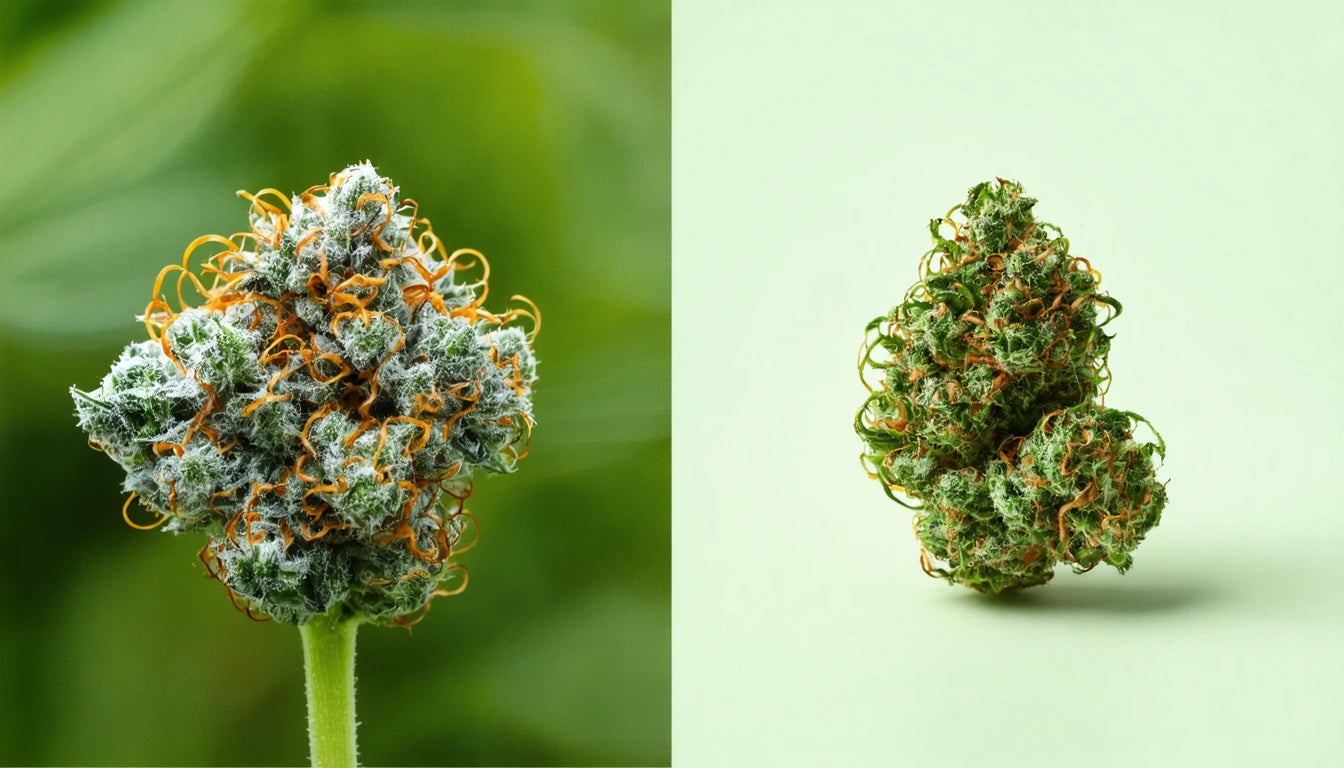Table of Contents
Understanding the Differences Between Flexible and Rigid Packaging Solutions
Packaging decisions significantly impact product protection, brand perception, and operational costs. The fundamental choice between flexible and rigid packaging solutions affects everything from shipping efficiency to shelf appeal. This guide explores the key differences, benefits, and applications of both packaging approaches to help cannabis businesses make informed decisions.
Defining Flexible and Rigid Packaging Types
Flexible packaging refers to containers made from materials that can be easily bent, folded, or manipulated without breaking. Common examples include pouches, bags, and wraps. Bulk packaging options often utilize flexible materials due to their adaptability and space efficiency.
Rigid packaging, by contrast, maintains a fixed shape regardless of the contents. What is a rigid box? It's a sturdy, inflexible container typically made from materials like cardboard, plastic, glass, or metal that provides structural integrity and protection. Examples include glass jars, plastic containers, and cardboard boxes.
Material Comparison: Flexibility vs Durability
Flexible Packaging Materials
What is flexible packaging made from? Common materials include:
- Polyethylene (PE) films
- Polypropylene (PP) films
- Mylar (PET) films
- Aluminum foil laminates
- Paper-plastic composites
For cannabis products requiring moisture and oxygen barriers, high-quality mylar bags with proper sealing capabilities offer excellent product protection while maintaining compliance with regulations.
Rigid Packaging Materials
Rigid packaging typically utilizes:
- Paperboard and cardboard
- Glass containers
- Hard plastics (PET, HDPE, PP)
- Metal containers (aluminum, tin)
- Wood boxes for premium products
The choice between flexible vs rigid packaging often comes down to product requirements, brand positioning, and budget constraints. Understanding packaging costs helps businesses make economically sound decisions.
Highlight: While rigid packaging offers superior protection and perceived value, flexible packaging provides significant advantages in shipping efficiency, storage space, and often lower environmental impact.
Cost Efficiency and Supply Chain Considerations
The economic differences between packaging types extend beyond just material costs:
Flexible Packaging Efficiency
What is ePAC flexible packaging bringing to the industry? Innovation in digital printing and on-demand production. Flexible packaging generally offers:
- Lower material costs per unit
- Reduced shipping weight (up to 85% less than rigid alternatives)
- Less storage space required for empty packaging
- Lower fuel consumption during transportation
- Reduced disposal volume
Rigid Packaging Considerations
Rigid vs flexible packaging cost analysis must account for:
- Higher material costs typically offset by perceived premium value
- Increased shipping expenses due to weight and fixed dimensions
- Better protection, potentially reducing damage claims
- Reusability potential, extending product lifecycle
- Often higher recycling rates in established systems
Sustainability Factors in Packaging Selection
Environmental considerations increasingly drive packaging decisions:
Flexible packaging typically generates less waste by volume and weight, resulting in a smaller carbon footprint during transportation. However, multi-layer flexible materials can be challenging to recycle. Sustainable packaging innovations are addressing these recycling challenges.
Rigid packaging, while often heavier, frequently uses materials with established recycling streams. Glass, metal, and certain plastics have higher recycling rates than multi-layer flexible materials. The durability of rigid packaging also supports reuse models.
Cannabis Industry Applications and Compliance
The cannabis industry has unique packaging requirements that influence the flexible vs rigid packaging decision:
Flexible Packaging Applications
- Child-resistant mylar bags for flower products
- Resealable pouches for edibles
- Custom printed film wraps for pre-rolls
- Multi-layer barrier pouches for concentrates
Rigid Packaging Applications
- Glass jars for premium flower
- Plastic containers for edibles and concentrates
- Cardboard boxes for vape products
- Tin containers for high-end products and gift sets
Compliance requirements often dictate specific packaging features regardless of format. Both flexible and rigid solutions can be designed to meet child-resistance, tamper-evidence, and labeling requirements, though implementation differs between formats.
Frustration-free packaging concepts are increasingly important as consumers demand easier access while maintaining compliance.
Future Packaging Innovations: Blending Rigid and Flexible Solutions
The future of packaging isn't strictly divided between rigid and flexible options. Emerging packaging trends show increasing hybridization:
- Semi-rigid materials offering flexibility with enhanced protection
- Flexible inserts within rigid outer packaging
- Rigid components in otherwise flexible packaging (pour spouts, resealable closures)
- Smart packaging incorporating digital elements regardless of material type
- Mono-material designs improving recyclability across both categories
As consumer preferences evolve, successful cannabis brands will strategically combine elements from both packaging approaches to optimize protection, presentation, sustainability, and cost-effectiveness.
The ideal packaging solution balances product requirements, brand positioning, regulatory compliance, and environmental responsibility. By understanding the fundamental differences between flexible and rigid packaging, cannabis businesses can make informed decisions that support their operational goals while meeting consumer expectations.











Leave a comment
All comments are moderated before being published.
This site is protected by hCaptcha and the hCaptcha Privacy Policy and Terms of Service apply.